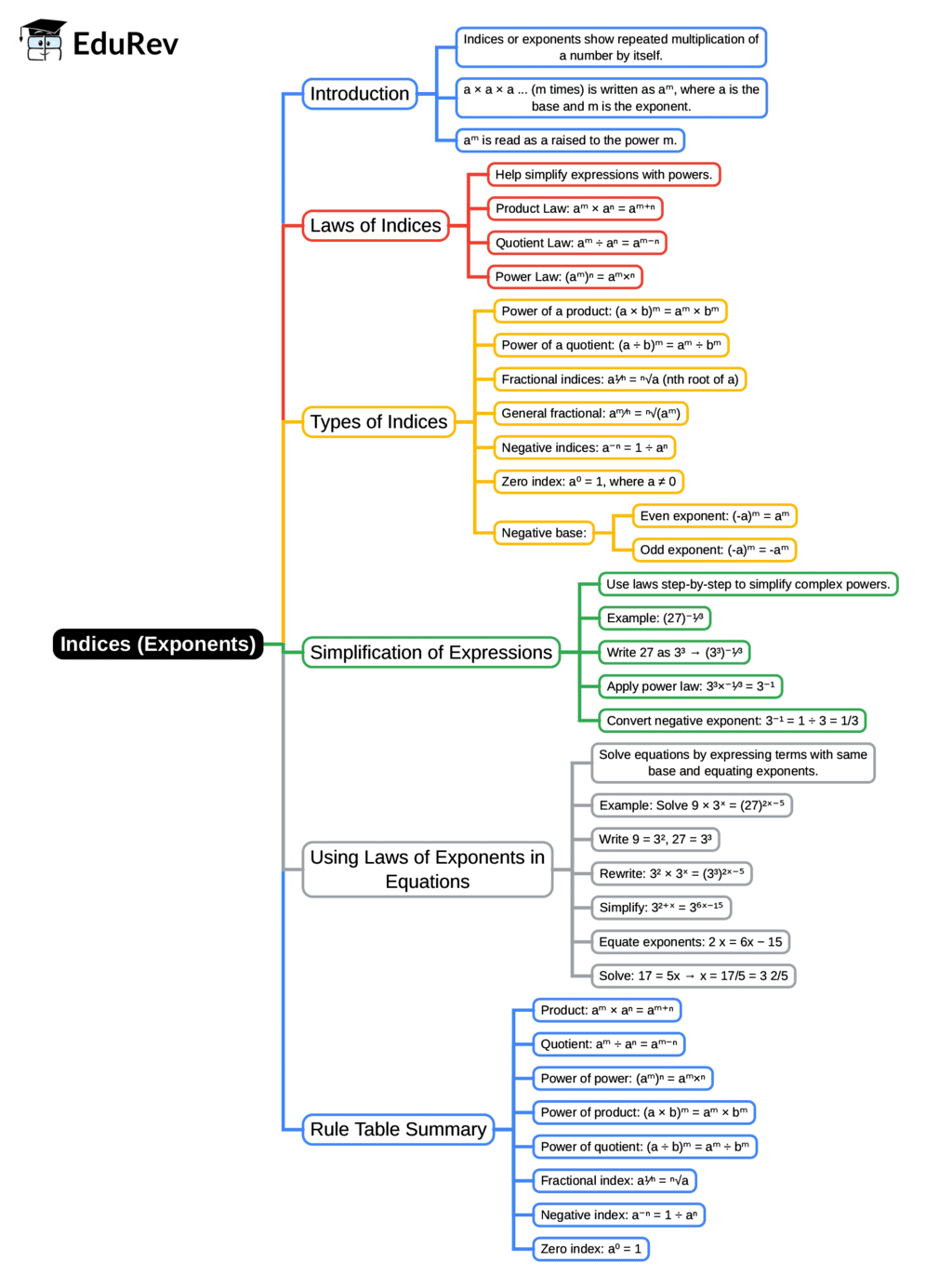UPSC Exam > UPSC Notes > CSAT Preparation > Mind Map: Indices (Exponents)
Mind Map: Indices (Exponents) | CSAT Preparation - UPSC PDF Download

The document Mind Map: Indices (Exponents) | CSAT Preparation - UPSC is a part of the UPSC Course CSAT Preparation.
All you need of UPSC at this link: UPSC
|
205 videos|264 docs|136 tests
|
FAQs on Mind Map: Indices (Exponents) - CSAT Preparation - UPSC
| 1. What are indices, and how are they used in mathematics? |  |
Ans. Indices, also known as exponents, are a way to express repeated multiplication of a number by itself. For example, in the expression 2³, the number 2 is called the base, and 3 is the exponent, indicating that 2 is multiplied by itself three times (2 × 2 × 2 = 8). Indices simplify calculations and are fundamental in algebra, allowing for easier manipulation of equations.
| 2. What are the laws of indices that one should know? |  |
Ans. The laws of indices include several key rules:
1. Product Law: aᵐ × aⁿ = a^(m+n)
2. Quotient Law: aᵐ / aⁿ = a^(m-n)
3. Power of a Power Law: (aᵐ)ⁿ = a^(m×n)
4. Power of a Product Law: (ab)ᵐ = aᵐ × bᵐ
5. Power of a Quotient Law: (a/b)ᵐ = aᵐ / bᵐ
These rules help simplify expressions involving exponents and are essential for solving problems in algebra.
| 3. How do negative exponents work? |  |
Ans. Negative exponents represent the reciprocal of the base raised to the opposite positive exponent. For example, a⁻ⁿ = 1/(aⁿ). This means that if you have 2⁻³, it can be expressed as 1/(2³), which equals 1/8. Understanding negative exponents is crucial for simplifying expressions and solving equations.
| 4. What is the significance of zero as an exponent? |  |
Ans. Any non-zero number raised to the power of zero equals one. This can be expressed as a⁰ = 1, where 'a' is any non-zero number. The reasoning behind this rule is based on the laws of indices, particularly the quotient law, where aⁿ / aⁿ = a^(n-n) = a⁰, which simplifies to 1. This property is important in various mathematical contexts.
| 5. Can you provide examples of how indices are used in real-life applications? |  |
Ans. Indices are widely used in various real-life applications, such as in finance for calculating compound interest, where the formula involves exponents to represent growth over time. Another example is in computer science, where algorithms may have their performance expressed in terms of exponents, such as O(n²) for quadratic time complexity. Additionally, scientific notation uses indices to express very large or very small numbers, making it easier to manage and understand data.
Related Searches





















